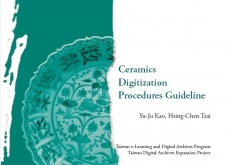TELDAP Collections
| Ceramics Digitization Procedures Guideline |
|
The material of ceramic itself easily reflects light and is harder to photograph than other objects. This is why the guideline investigates how to take a picture that perfectly shows the object's shape and at the same time clearly displays its decoration patterns. If digitization work ends at the creation of digital image files, then it brings little meaning to artifact preservation and knowledge dissemination. The establishment of metadata and development of a database system are also required to properly preserve and utilize archive resources as well as truly implement the meaning of digital archives. Although the guideline focuses on digitizing ceramics, the application can be employed on other objects as long as they are small-scale and three-dimensional. Additionally, most of the concepts in the guideline can be used as references in other digitization projects.
|












